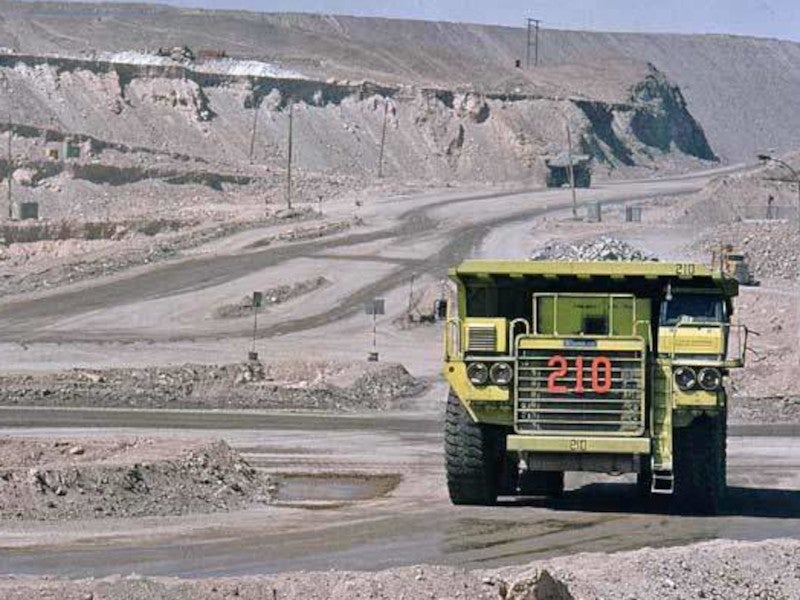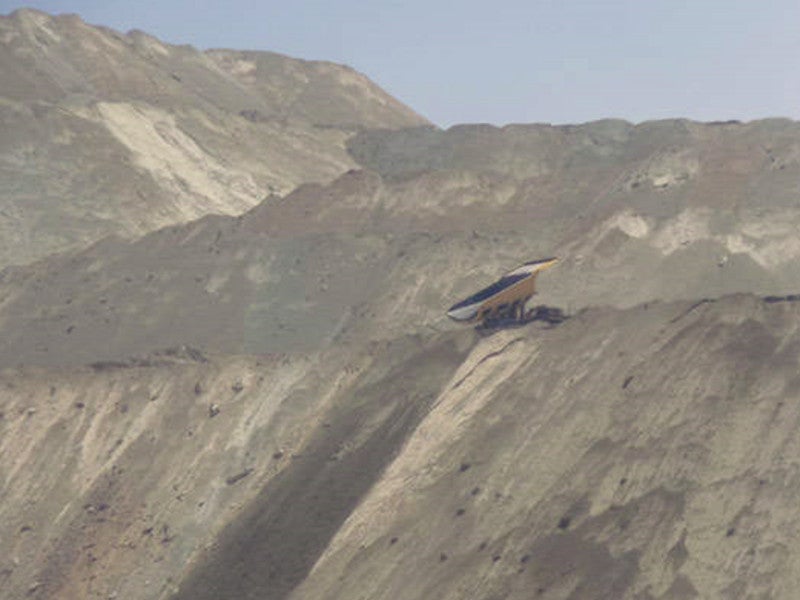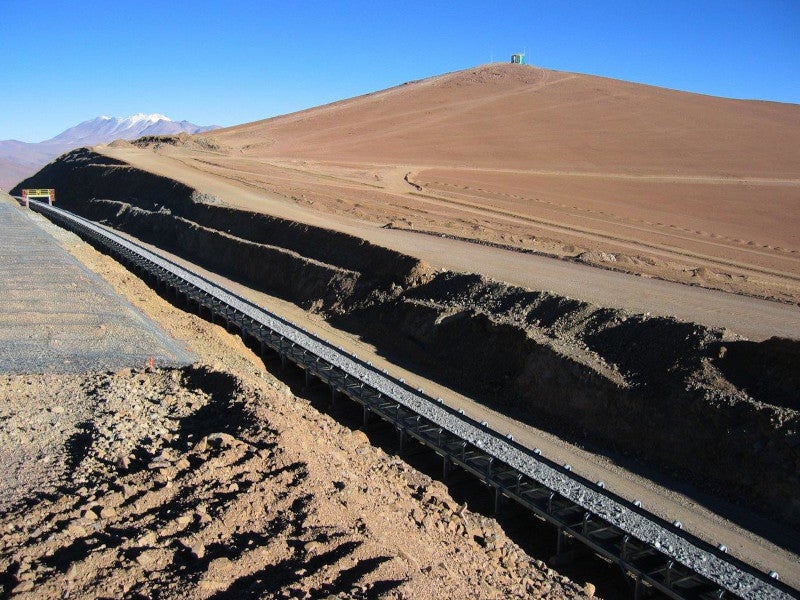The Chuquicamata mine, located in northern Chile, is one of the largest open-pit copper mines and the second deepest open-pit mine in the world. Popularly known as Chuqui, the mine has been operating since 1910.
The century-old copper mine is owned and operated by Codelco and forms part of the company’s Codelco Norte division, which includes the Radomiro Tomic (RT) mine found on the same mineralised system.
An underground mine was developed to access the ore body situated beneath the present open pit mine. The conceptual engineering for the underground Chuquicamata mine began in 2007 and was finalised in March 2009. The project obtained environmental authorisation in September 2010 and underground mining operations began in 2019.
Location of the Chuquicamata mine
The Chuquicamata mine is located 1,650km north of Santiago in Chile and 15km north of Calama, in Chile’s Antofagasta region.
Chuqui porphyry geology and mineralisation
The Chuquicamata mine is situated atop the Chuqui Porphyry Complex, an elongated, north-north-east trending intrusive body, spanning approximately 14km in length and 1.5km in width. This steep and near-vertical complex extends from the Chuquicamata site to the RT mine and encompasses the East, West, Banco, and Fine Texture Porphyries.
Mineralisation within the area is significantly influenced by potassic alteration, characterised by the presence of alkali feldspar polymorphs and the substitution of albite for plagioclase. This alteration is predominantly marked by the widespread transformation of hornblende to biotite, which retains the original igneous textures. Accompanying these alterations are granular quartz and quartz-K feldspar veinlets.
Copper reserves at Chuquicamata
The proven copper ore reserves at Chuquicamata mine are estimated at 751 million tonnes (mt), grading 0.79% copper with a fine copper content of 6.0mt as of 2022.
Mining and processing details
Codelco uses conventional open-pit mining methods at Chuquicamata. A conventional truck-and-shovel operation constitutes the mining activity. Large quantities of the ore are crushed within the pit. Underground conveyors transport the crushed ore to the mill bins.
An Outokumpu flash smelter is installed for smelting the concentrate. The concentrate is then passed through a converter with an electric furnace. After the slag is cleaned, the concentrate passes through four Pierce Smith converters. Blister copper is then sent to six anode furnaces. The electrolytic refinery has a capacity of 855,000tpa. Three anode casting wheels were installed and are fed by the furnaces.
Underground mining at Chuquicamata
Underground mining is conducted using the conventional drill and blast drifting. The ore is extracted through an extensive block-caving method.
It comprises four production levels, a 7.5km main access tunnel, five clean air injection ramps, and two air-extraction shafts.
The tunnels will deepen the mine by nearly 787m by the end of production in 2060. The underground mine is estimated to cost of $4.2bn and will produce an estimated 140,000 tonnes of ore per day. The mine is expected to produce 366,000tpa of copper and 18,000tpa of fine molybdenum.
The underground mine features the most powerful conveyor belt, which was commissioned in September 2020. The belt system delivers copper ore from the underground mine directly to the concentrator plant, 13km from the mine site. The infrastructure used in the conveyor technology eliminates the need for haul trucks.
The three principal 11,000tph conveyors feature gearless conveyor drives (GCDs) equipped with large ABB AC synchronous motors.
Contractors involved with the Chuquicamata copper mine
The feasibility study for the underground mine was awarded to Hatch in November 2009. Hatch will oversee the basic engineering required for the development of access works, environmental studies, minerals handling, management models, infrastructure and ventilation works.
Codelco signed a contract with Aker Wirth at the end of 2012 for the delivery and testing of a mobile tunnel miner (MTM) to be used for developing the Chuquicamata underground mine.
SNC LAVALIN was awarded the engineering, procurement, construction and management (EPCM) contract for the technology modernisation at the Chuquicamata refinery. The works involved changing the copper cathode production technology, process capacity expansion and a new system of material handling.
VSL Chile constructed a rock crusher in the middle of the open pit mine, which involved the erection of a 4,000m², 36m-high wall to enable the transport of crushed rock by a conveyor belt through a tunnel rather than by truck.
Metso was awarded an 18-month services contract for the mine’s grinding process improvement in May 2014.
Codelco awarded Jacobs a contract for the engineering, procurement, and field support services involving the overhaul of acid plants at the Chuquicamata mine.
ABB, the leading power and automation technology group, secured an order from Tenova TAKRAF Chile to automate a mega conveyor belt system at the mine.
Sinclair Knight Merz undertook the conceptual engineering of the mine, including identification, option studying and analysis for ore excavation and handling.
Sika, a speciality chemicals company was awarded 70% of the total concrete admixture work for the underground mine infrastructure.






